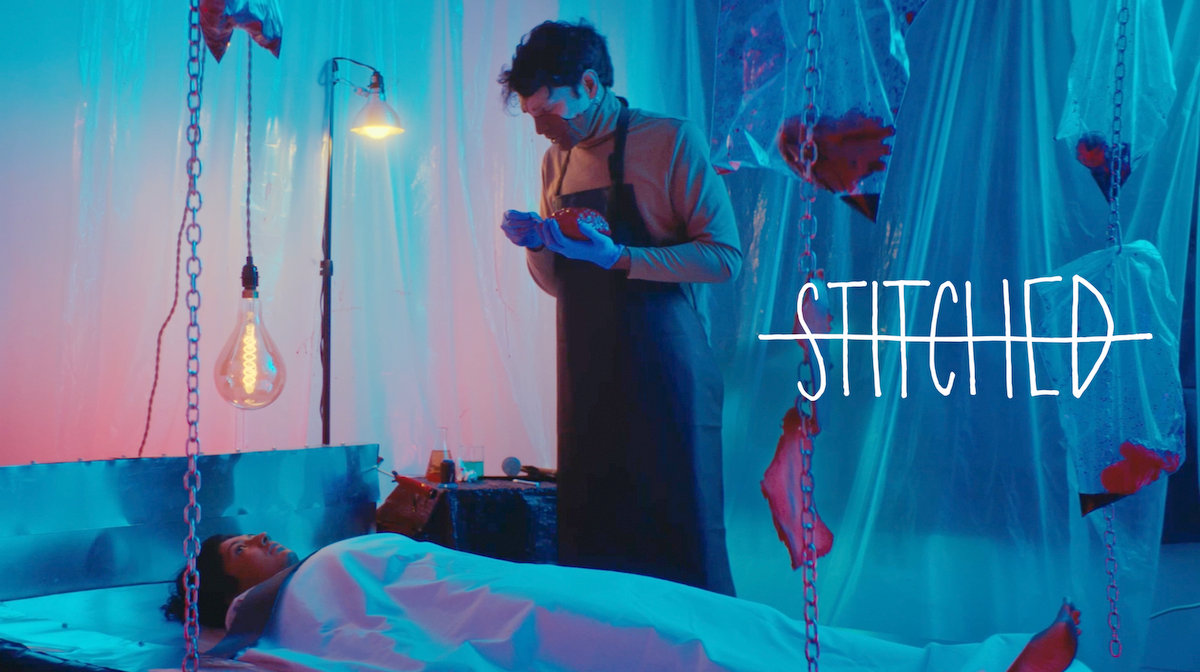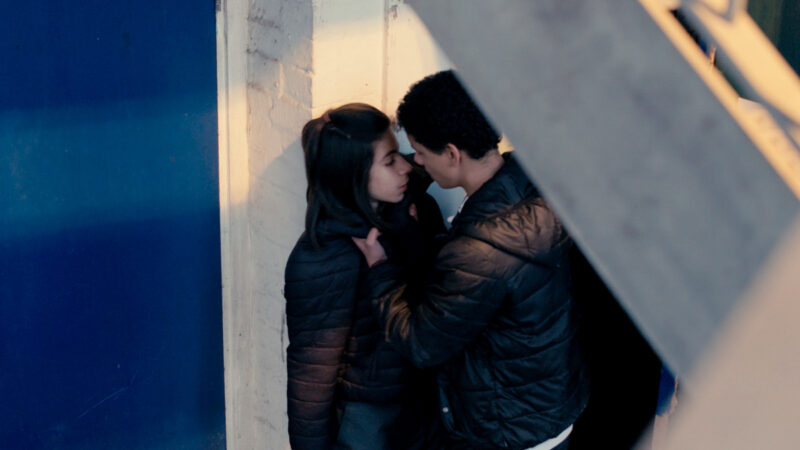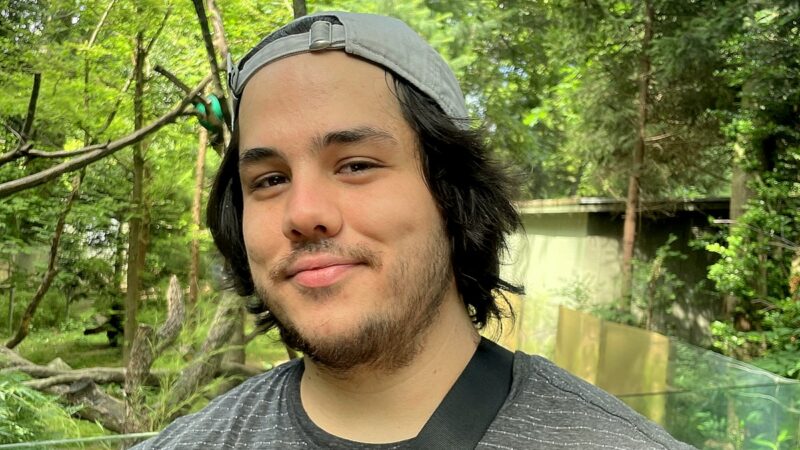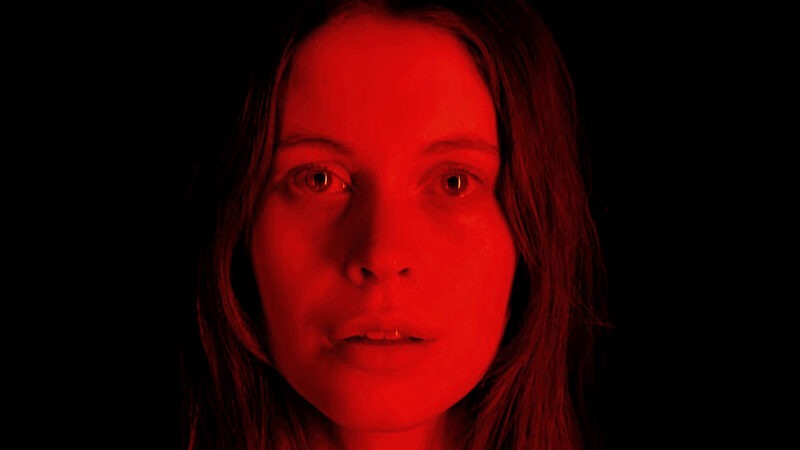
A Film Festival Case Study
Narrative | Dramatic Features
Film Name: Stitched
Genre: Comedy
Length of film: 15:30
Date: 08.12.2023
Director: Lorena Lourenco
Producer: Naomi Sedgwick
Writer: Pratima Mani
Cinematographer: Eurica Yu
Editor: Marie Freire
Composer: Thiago Muller
Production Company: Milktook Inc.
Budget: $40k
Financing: Grants/Personal + Friends/Family
Shooting Format: Alexa Mini – 2.39:1 Anamorphic
Screening Format: 2.39:1 Anamorphic
World Premiere: HollyShorts 2023
Awards: NA
Website
The Official Trailer for Stitched
Watch The Trailer for Stitched directed by FILMMAKER
A Short Biography of Lorena Lourenco
I am a Brazilian filmmaker in LA and USC School of Cinematic Arts Alum. Here os some of my work, hope you enjoy.
The Lorena Lourenco Interview
indieactivity: What is your film about?
Lorena Lourenco (LL): “Stitched” is an absurd comedy in which a South Asian woman from the diaspora, tired of dating people who can’t keep up with her mutable cultural identity, decides to “frankenstein” together the ideal partner. The story was based on writer/lead Pratima Mani’s own experiences.
Tell us about the festival run, marketing and sales?
Lorena Lourenco (LL): Prior to submitting to festivals or any distribution, establishing a well-defined strategy and aligning on goals is paramount. For “Stitched,” our approach revolved around identifying festivals that aligned with our objectives, the core of the content, and our intended audience. We had a couple of goals; to showcase our work as filmmakers, and to find an audience that would appreciate our film.
Based on our goals, we prioritized festivals that were Oscar© qualifying, had global viewership, and offered opportunities to connect with fellow filmmakers whose work we admired.
It’s important to have some marketing efforts put towards the short film. We created an Instagram (@stitchedfilm) which would allow us to share our wins, keep our audience informed, and find new audiences as we go through the festival circuit.

For our premiere at HollyShorts Film Festival, our film garnered some organic press. We were written up in Dread Central and In Their Own League among others. Our plan is to do the festival circuit for a year, gather an audience and some buzz, before ultimately seeking a digital release.
Give the full Official Synopsis for your film?
Lorena Lourenco (LL): Leela, a South Asian diasporic woman without a hometown or fixed identity, struggles to find love. A string of lackluster dates produces disappointing results: no prospective suitor seems able to “culture hop” or adapt to the various terrains of her life as much as she’d like. She’s too left-of-field for the South Asian boys, too family-oriented for hipsters, not Indian enough for that one white guy who lives in a Connecticut ashram, and we’re not even going to mention that other dude who congratulates her on “having zero accent. (It’s a compliment!”)
Frustrated, she complains to her sister Kavita, who tells her she’s being melodramatic. Leela doesn’t listen. Instead, upon learning that her former high-school classmate and all-American wonder girl, Kelly Kelley, has gotten engaged to her small-town sweetheart, Leela decides to take drastic action.
Convinced that happiness lies in meeting the ‘right’ person—someone perfectly calibrated to her ever-changing sense of self—she decides to literally “frankenstein” together the ideal partner, Sai.
At first, things are rocky. Sai, and Leela attend dinner with her uptight, lightly xenophobic parents and nauseatingly artsy friends, all of whom are wildly unimpressed by her new partner. Before long, though, Sai charms them, effortlessly code-switching his way into their good graces. For one shining moment, it feels like Leela may have got the match she’s chased for so long.
Then, things nosedive. Sai notices Leela’s a “little antagonistic” for his liking and suggests performing his own surgery on her to “tweak” her personality flaws. Leela isn’t having it. Sure, she built him from scratch to be the ideal boyfriend, but that’s totally different from him trying to change her. To be honest, it feels super patriarchal. They argue. Sai leaves.
Leela is distraught. She searches for Sai everywhere, to no avail. Startled by her little sister’s distress, Kavita attempts to offer Leela some sage advice: relationships aren’t built on instant compatibility, they’re built on patience, effort and compromise over years.
Once again, Leela doesn’t listen. Instead, she starts building a second, “improved” version of Sai. Before she can bring the body to life, however, she bumps into Kelly Kelley, now divorced mere months into her perfect marriage. Confused about how such a picture book couple could fall apart, Leela interrogates Kelly, only to find that Kelly’s magical ex turned out to be a con-man. Not quite a fairytale romance then. Although Kelly’s now with an even more perfect man (“Mark’s great. We were both in marching band together!”) the spell is broken. Leela finally sees that relationships cannot be gamed into success.
Development & Financing?
Lorena Lourenco (LL): Our writer and lead actress, Pratima Mani, posted on an online community for women of color in film, that she was looking for a director for a short film. Our director, Lorena Lourenço, replied to the post with her work, and Pratima shared with her the script. They realized they had very similar dark comedy sensibilities and that’s how the magic started. Bless the internet!
From there the two reached out to Naomi Sedgwick, our producer, who came recommended by a trusted producer. The chemistry between the team was immediately clear and from there a few sets of notes, table reads, and rehearsals helped mold the script further.
In terms of financing, our first step was to create a budget. Once we had a budget and a plan, we applied for fiscal sponsorship which allows an existing 501(c)3 nonprofit organization to support a project by allowing access to different types of financing opportunities, and sources of funding. Our initial round of funding was secured through friends and family, and then we eventually found a corporate sponsor who was willing to match a donation. Finding the money for the project is definitely harder than making the actual film, but it’s all about persistence and not giving up. There’s money out there for independent projects, it’s just about believing it and then having the persistence to go and find it!
Production?
Lorena Lourenco (LL): The initial phase involved assembling the filmmaking team, including the writer, director, and producer. The collaboration kicked off with the creation of a meticulously planned schedule, working back from our dream festival submission due dates.
Following this, we cast the film and performed a table read. Our decision to cast early was driven by the need to secure financing. We were incredibly fortunate with the talents we managed to bring on board, as they not only were perfect in their roles but were so flexible in the independent filmmaking process- they came on before even having locked shooting dates! Once we had key roles and our cast, we got fiscal sponsorship from VC Media, and received a grant.
With most funds secured, we locked in our shoot dates and heads of department, which initiated creative conversations between the director and heads. From there we proceeded to create a shooting schedule, secure locations, and equipment.
Upon the conclusion of production, we continued to raise money. Unlike the conventional trajectory of securing full funds beforehand, we chose to raise some funds retroactively so we could present tangible progress to potential backers, which in our case was a WIP trailer put together with the footage we captured. Through this endeavor, we successfully raised over $20,000. These funds were vital in covering overages and post-production expenses.
The post-production phase spanned a year and a lot of it was used to gather financial resources. We continued to work on the film as we received money. The film underwent a significant evolution during this period, involving over 20 distinct edits. Animation sequences were also introduced, and this pivot enriched the project. The film’s transformation throughout post-production encapsulates the beauty of filmmaking, especially independent filmmaking. We allowed for the film to morph as we navigated the creative process and grew as artists.
Festival Preparation & Strategy?
Lorena Lourenco (LL): In terms of the festival run, the first step is having a completed project. Then it’s essential to gather all the materials needed for the festival circuit. Those materials include a trailer, film stills, a film synopsis, bios/headshots of everyone involved, and a press kit. It’s so important to have your materials ready, as many festivals ask for them as part of the press that they do on their end, and sometimes they even send them to other programmers.
In terms of our festival strategy, we applied to our top festivals first. We are so glad to have had our film premiere at HollyShorts, a festival that celebrates shorts, and showcases filmmakers around the world. We are so thankful for them, and all the press they helped to generate for our indie project. We’re also very much looking forward to our upcoming screenings, which are yet to be publicly announced.
The Release?
Lorena Lourenco (LL): Our film is still in its festival circuit, but we hope to have a release for it soon!
Advice from the Filmmaker?
Lorena Lourenco (LL): There is a lot we learned from this film that helped us grow as filmmakers – first and foremost it would likely be to never trust NYC weather. We did surreptitiously get rained on during our only exteriors day. But alas, we survived and the rain subsided.
In all sincerity, one of the greatest lessons from this film I feel is to trust the process, what we all envisioned in our heads as the film during the development process matches in a lot of ways our final product, but of course, as always in indie filmmaking, also differs quite a bit from what we had at the end. I believe the ability to be flexible and think creatively about production problems on set is a very necessary skill that served us well in “Stitched.”
And during post (as well as pre-production) it’s paramount to have a team within your heads of department. A team that can lean on each other for creative input. Though there is also great value in having a creative community (outside of the film). And through which you can create test screenings to receive trusted feedback.
Our film did evolve quite a bit in post, which allowed us to understand. How sitting with a film and allowing it to breathe before returning to it with fresh eyes. This is an absolutely invaluable aspect of post. Sadly not all post schedules allow for creative pauses, but we were very grateful to be able to do so.
Tell us what you think of the Case Study for Stitched. What do you think of it? Let’s have your comments below and/or on Facebook, Instagram. Or join me on Twitter.
Socials
Website
IMDb
LinkedIn
Instagram
Vimeo
MORE STORIES FOR YOU









